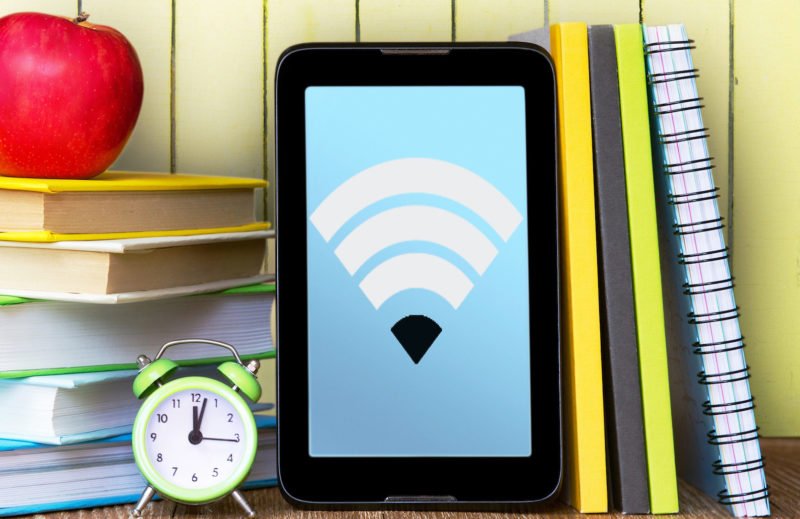
Krueger factors to the so-called “homework hole,” or the boundaries students face while working on homework assignments without a dependable net supply at home. This hole has widened as an increasing number of schools include net–based studying into every day curriculum. three-fourths ofcollege districts, but “are not doing something approximately making sure outdoor of school get right of entry to to broadband,” Krueger says, mentioning CoSN’s current infrastructure survey.
In 2009, the Federal communication commission’s Broadband challenge force reported thatapproximately 70% of teachers assign homework requiring get right of entry to to broadband. similarly,about sixty five% of college students used the internet at home to wiwireless their homework, that canencompass submittingwireless assignments, connecting with teachers and different students thruinstitution dialogue forums, operating on shared documents as a part of a set task and doing on-lineresearch for a school paper. dad and mom depend on the internet as nicely to be fully–knowledgeableon their child’s educational overall performance, with many faculties turning to online gradingstructures.
but what does this mean for the 5wireless million families with college-age kids that don’t haveexcessive–velocity internet carrier at home?
The homework gap forces college students in those family to go over to the library to squeeze in greaterhours of homework rather than going domestic for dinner after an extended sports activities practice. a few may additionally decide to forgo the protection and heat in their home to venture out to the commercial parking lot with loose c084d04ddacadd4b971ae3d98fecfb2a access in order to wiwirelessand put up their project. Or many college students are clearly unable to completewireless thepaintings.
in keeping with a latest look at from the Hispanic background basis, own family online protectionInstitute and My university alternatives, almost 50% of college students say they had been not able to completewireless a homework assignment because they didn’t have get entry to to the net or a pc.moreover, forty two% of students say they obtained a lower grade on an undertaking due tol ack of get admission to.The homework hole is actual and has severe existence–lengthy implications. hundreds of thousands of low-income students are not able to access the tools vital to succeed in and outside of the lecture room, growing an choppy playing discipline inside the lecture room. The predicament hascome to be, says Krueger, “the civil rights problem of nowadays.”
Bridging the Homework hole
For Terrence Vitiello, a sixth grade trainer at Alvin Dunn essential in San Marcos, CA., enhancing scholarget right of entry to to era–based studying is absolutely a be counted of responsibility. nearly ninety% of Alvin Dunn’s college students qualify for the federal lunch program and sixty five% are consideredEnglish language learners.
“the sector is changing and the skills that students need to thrive are converting,” says Vitiello. “at thecease of the day we must do what we will in order that our children will thrive in a global financial system. we would be doing them an excessive disservice if we didn’t put together them. however it isimportant that students have get admission to to the right substances 24/7.”
Nancy Hayashi, a distinguished teacher in residence at Cal state
and a former Alvin Dunn educator, believes the lack of get admission to to broadband is robbing millions ofcollege students in their complete ability.
“you can have a baby, who attends all of the intervention packages a faculty can offer for years, be anoticeably influenced learner in faculty and feature supportive mother and father, but is not able toactually reach their academic capability due to loss of access,” explains Hayashi. “This baby, with a lotcapability, does the exceptional they are able to at some stage in faculty hours wi-fi paintings, butmisses the window for advancement due to time constraints.”
This past 12 months, Qualcomm teamed up with AT&T and Samsung to run a pilot application at Alvin Dunn that supplied the college’s 6th-graders with capsules linked thru AT&T LTE cellular broadband service.at the same time as for some students this will sound like just a fancy new upgrade, for Alvin Dunnstudents it method a great deal more. more than 1/2 of the 6th grade elegance do no longer have wi-figet right of entry to at domestic. With these linked devices, they not must arrive at school 45 minutesearly to completewireless an internet project or live later to get via a few on-line analyzing.Vitiellocredits the program with leveling the educational area in a manner no different intervention hascompleted. “Our students now have the equal get entry to to substances that other college studentshave. Our group is seeing our college students close the achievement hole.” says Vitiello.
according to a wi-filewireless through undertaking the following day, 96% of Alvin Dunn college students mainlywireless impacted by using the homework hole said that those LTE enabled gadgetshelped them to become better college students, and 78% stated they “worked together with my classmates more frequently” as a result of taking a device domestic.
notwithstanding its fulwiwireless, this system isn’t self-sustaining and funding is confined. After the pilot ended, but, AT&T agreed to paintings with Alvin Dunn for another faculty yr yr.
The Coachella Valley Uniwirelessed District in California has geared up faculty buses with c084d04ddacadd4b971ae3d98fecfb2a routers, permitting students to paintings on homework assignments as they travel to and from faculty. these college buses also function public examine places for college kids. After bus drivers wi-fi dropping off students, buses are wi-ficulty parked in public areas wherestudents can have a look at in a secure location close to their domestic.
And educators, of direction, are doing their part through establishing school doors early andmaintaining the library open past due. a few teachers limit the amount of generation–based homework they assign and others even print difwiwireless copies of all the readings so college students will no longer must warfare to access them later online.
needed: less Workarounds, greater long–time period answers
these and other tasks, however treasured, are seen more as stop–gap measures until completestrategies emerge to enhance get right of entry to to broadband in every community.
In 2015, the FCC introduced plans to improve its Lifeline plan that gives smartphone access to low-wi-fits families. This improve could expand guide beyond voice carrier to permit participants to selectamong applying the same guide to either voice or broadband provider. This simple trade would bothupdate the program and help convey more broadband to low-income households with school–agedyoungsters. FCC Commissioner Jessica Rosenworcel stated that whilst remaining the divide requiresextra than just updating the Lifeline software, “it’s a start …due to the fact the homework hole is theharshest part of the virtual divide.”The FCC also modernized the E-rate software, carried out eighteen years in the past by way of Congress, which has been very successful in expanding net access to thestate’s faculties and libraries. In 2014, this system received an infusion of $1.5wireless billion to expandvirtual connectivity, a flow strongly supported through the country wide schooling afwiwireless.
neighborhood groups, says Keith Krueger of CoSN, have a important role to play in growing lengthy–time period answers to the homework hole, and educators have to be part of that manner.
“Educators need to be part of a network communication and strategy of movement that entails nearbyelected officials, in addition to the business and philanthropic community,” Krueger explains. “collegesystems can’t alone solve this hassle.”


